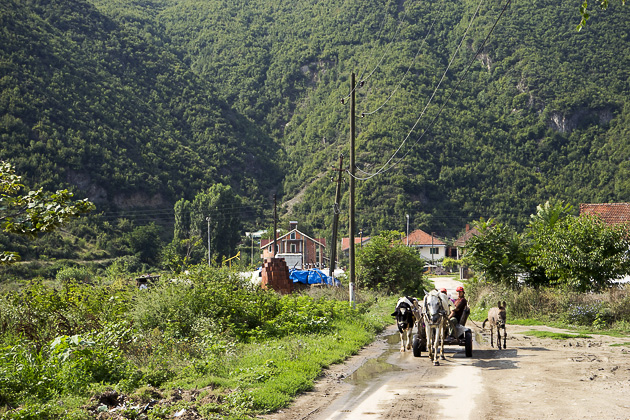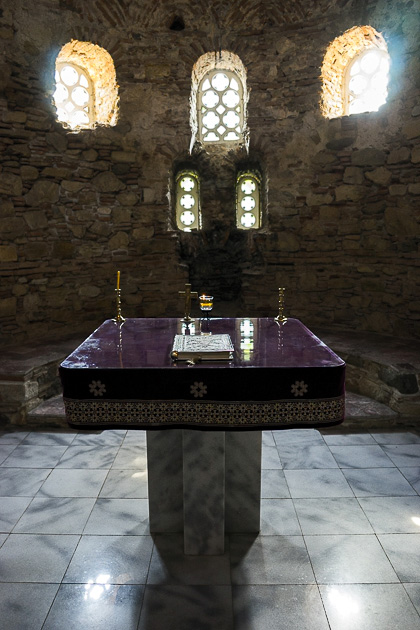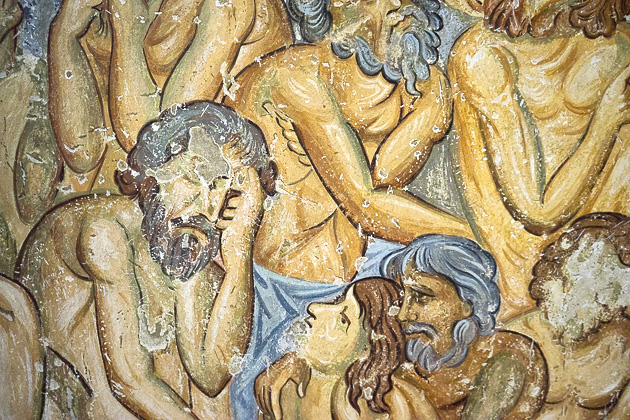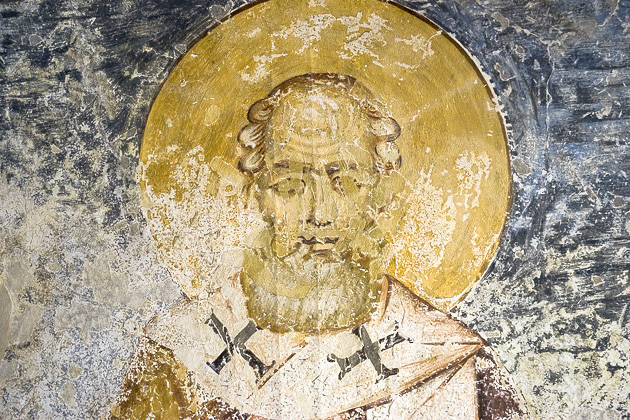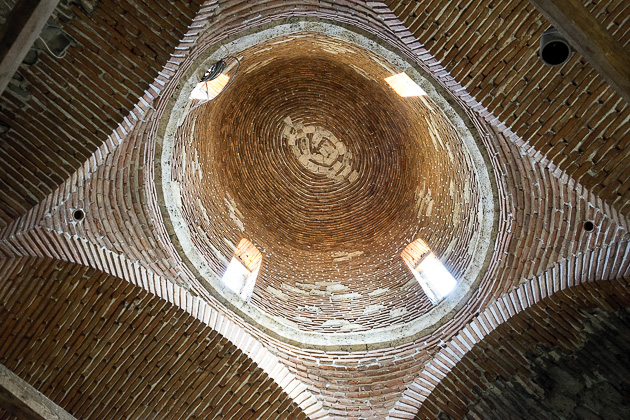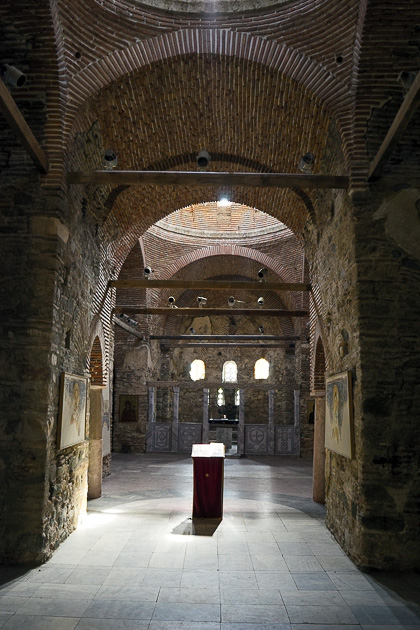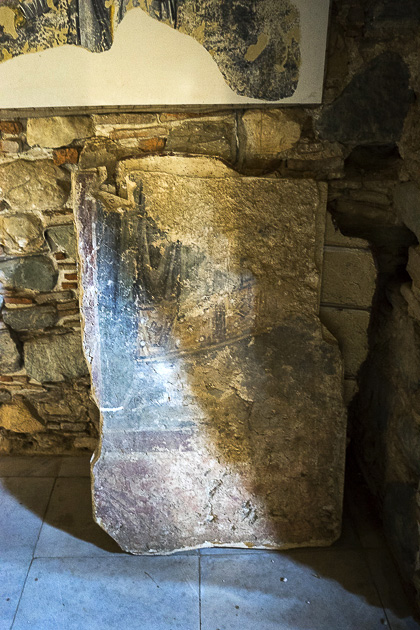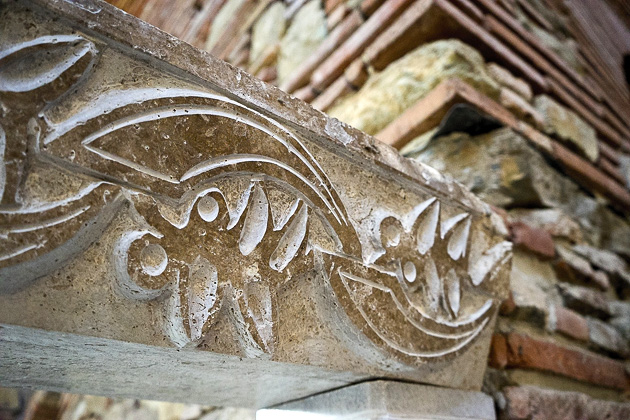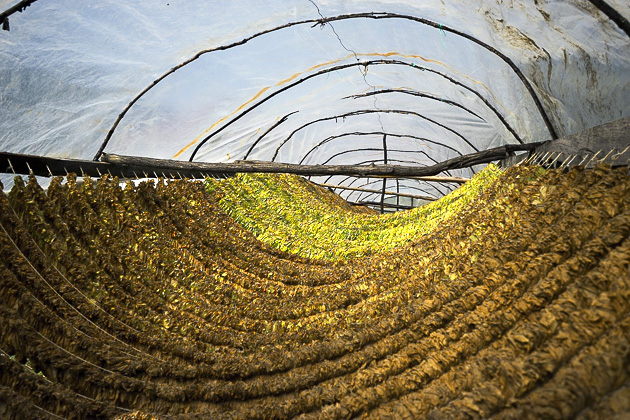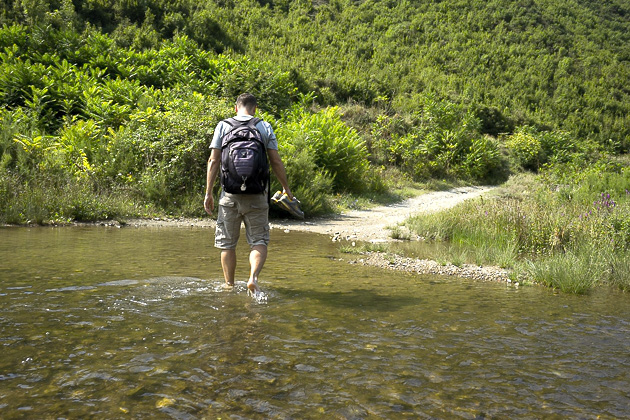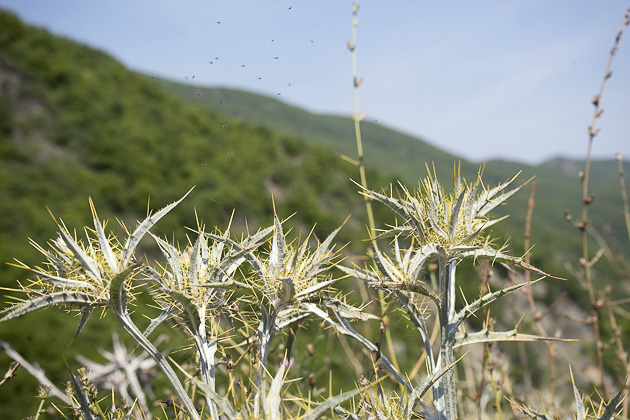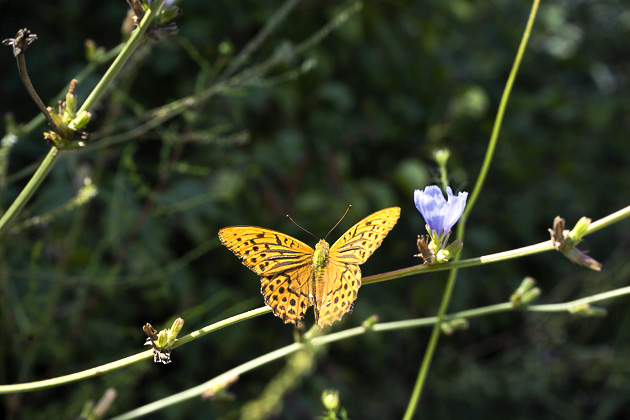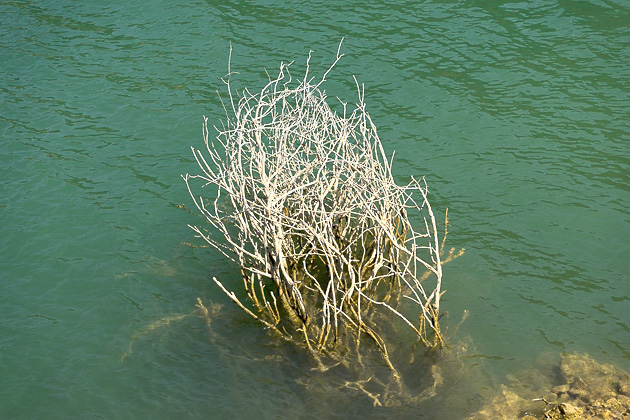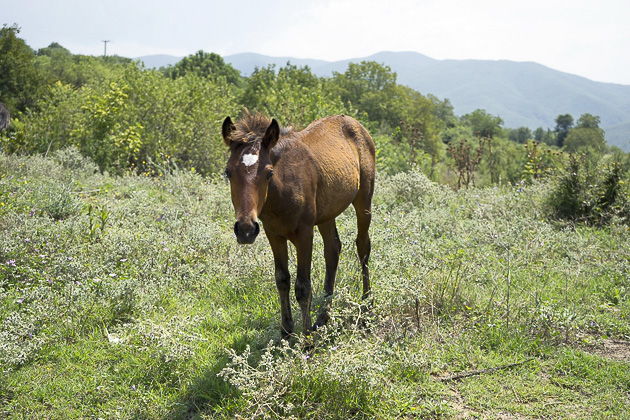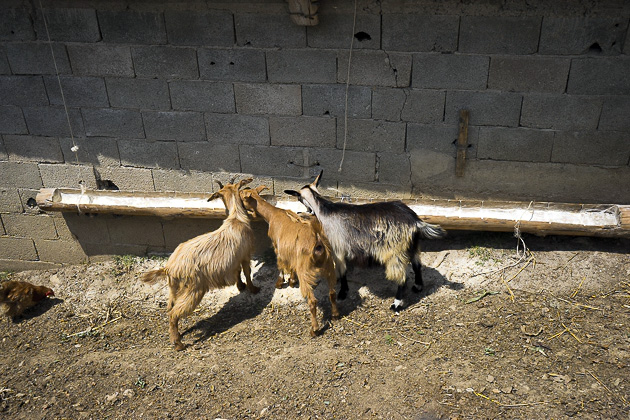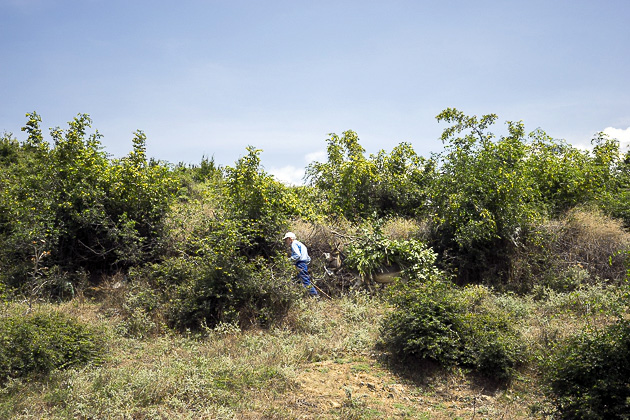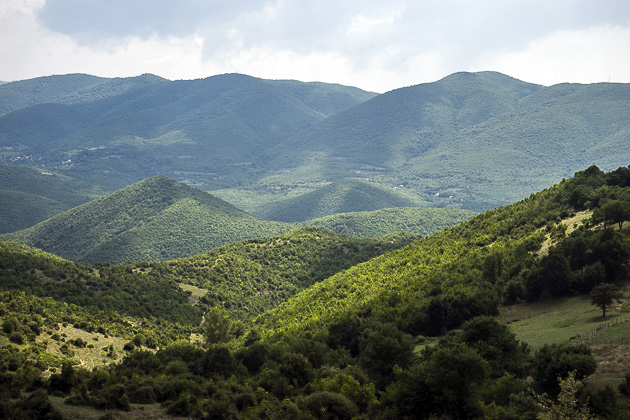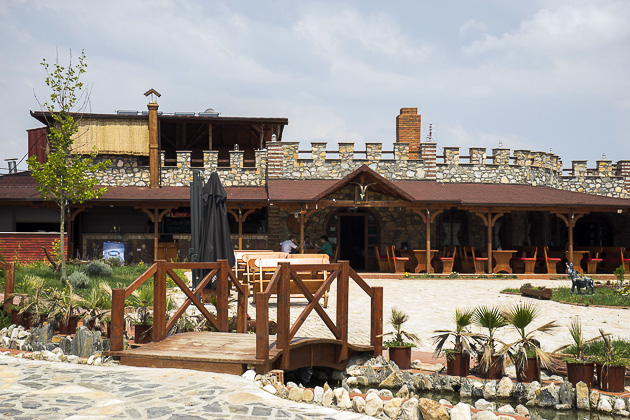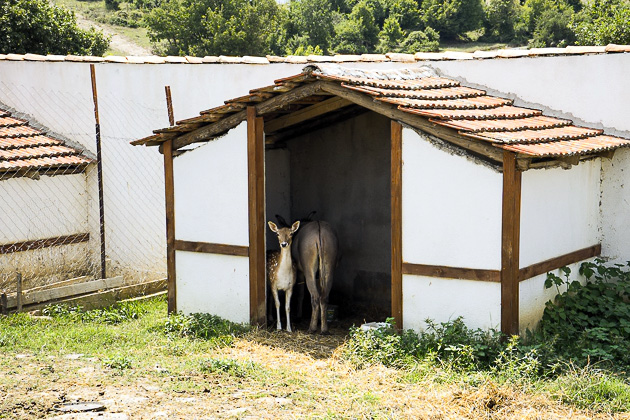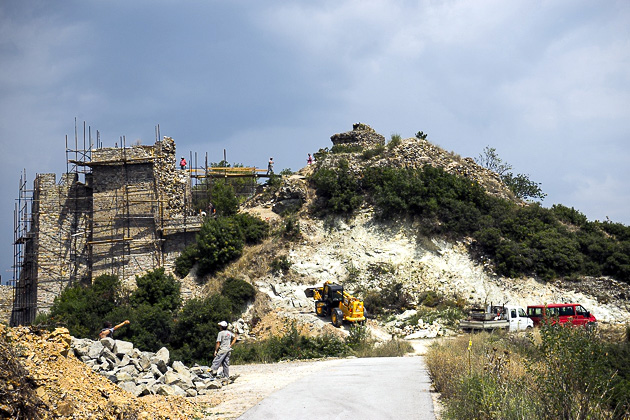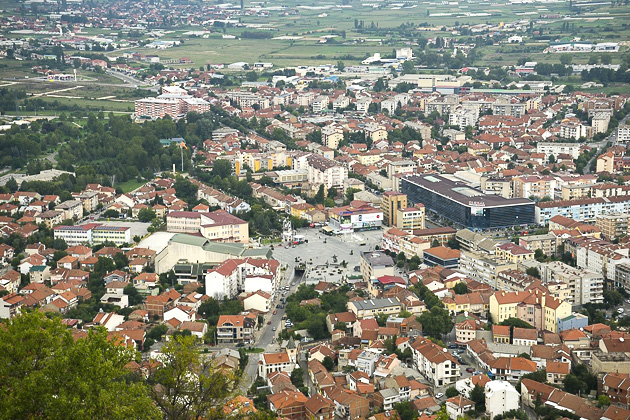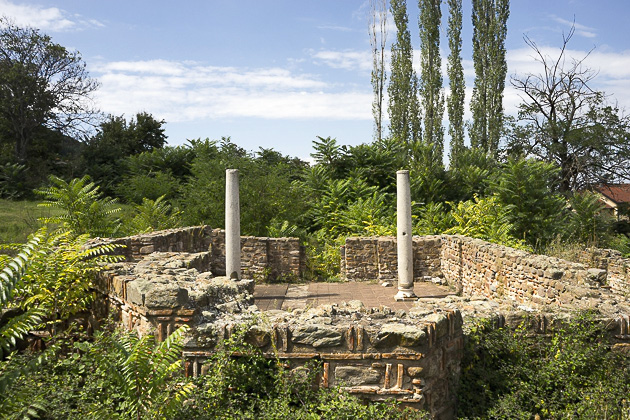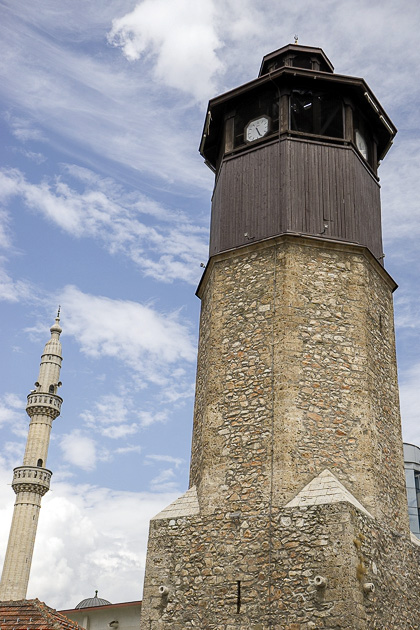Hiking from Vodoča’s Monastery to the Lake
The village of Vodoča is located a few kilometers outside of Strumica. We visited a monastery there, before walking up to Lake Vodoča for a midday swim. On the long hike back to Strumica, we stopped for lunch at an entertaining hilltop restaurant, and saw the remains of a medieval fortress.
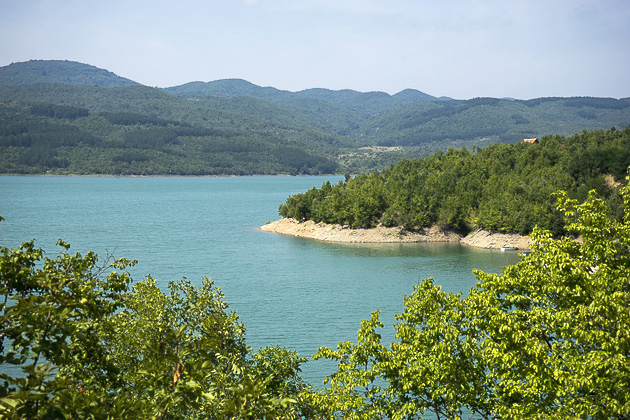
Vodoča is the kind of village where, as soon as you’ve convinced yourself that it’s abandoned, around the corner comes a family riding in a mule cart, looking at you funny, like, “Where’s your mule?” A mere smattering of houses, Vodoča is most famous as the site of the 1014 Battle of Kleidon, after which the victorious Byzantines gouged out the eyes of the defeated Bulgarian soldiers, before sending them back to Tsar Samoil in Ohrid. The town’s name alludes to the bloody event; “vadi oči” is Macedonian for “eyes out.”
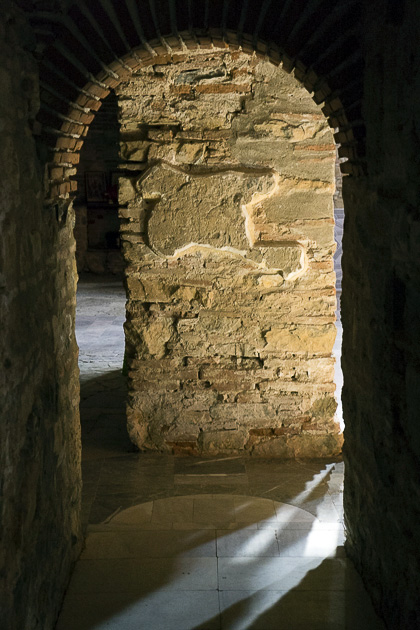
We were all alone while exploring Vodoča’s monastery, which has been a place of worship since early Christian times. The first basilica was built in the 4th or 5th century. Nothing of that structure remains, but there are remnants from the 7th century, as well as fragments which date from the days of Tsar Samoil. Over the centuries, the church has been demolished and rebuilt a number of times. The current version dates from 1982. Inside, you can still see some 11th century frescoes, although they’re badly faded.
After leaving the monastery, we set off on our hike, following an unpaved track into the hills. The path hemmed close to a small river, entering ever more remote and beautiful territory as it ascended. This was an easy trek of about five kilometers, and we didn’t encounter another soul the whole way.
The path ended at Lake Vodoča, a large reservoir around which are a few houses and a docking area for boats. After the sweaty uphill hike, the water proved irresistible and we clambered down onto the rocks to dive in. Lake Vodoča is strictly “swim at your own risk”: there’s not a beach, the rocks were slippery, and it’s possible that we had trespassed onto private property. But the water was cool and refreshing.

Now we began the walk back to Strumica, about eight kilometers away. About halfway through, after passing through the village of Popchevo, we found ourselves at a new restaurant called the Czar’s Fortress Complex. It was time for a break, so we went inside. Lurking behind the gate was a donkey who scared us half to death with his sudden, loud braying. He was just one of many animals kept at this bizarre restaurant/hotel/petting-zoo; others included pigs, rabbits, chickens and even a small deer.
Back on the trail, it took another hour to reach the ancient fortress which sits high above Strumica. Unfortunately, there was restoration work going on, and we weren’t able to see much apart from scaffolding. The fortress was built in the 5th century, but remains have been discovered which date 600 years before that.
At this point, Strumica was right below us, but our hike now entered its most difficult stage. The path started out fine, but quickly became both extremely steep and overgrown. When we finally emerged onto the city streets, it was with shins scraped from thorns, butts dirty from scooching, and hearts racing from the dangerous descent. There must be an easier way to get between the town and fortress; make sure to ask around before attempting it yourself.
Locations on our Map: Vodo?a Monastery | Lake Vodo?a | Czar’s Fortress Restaurant | Czar’s Fortress
